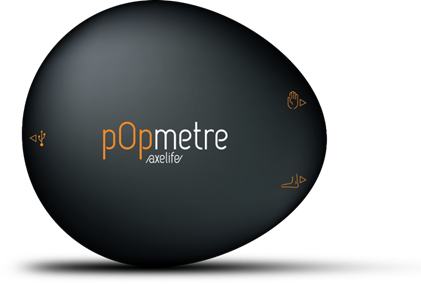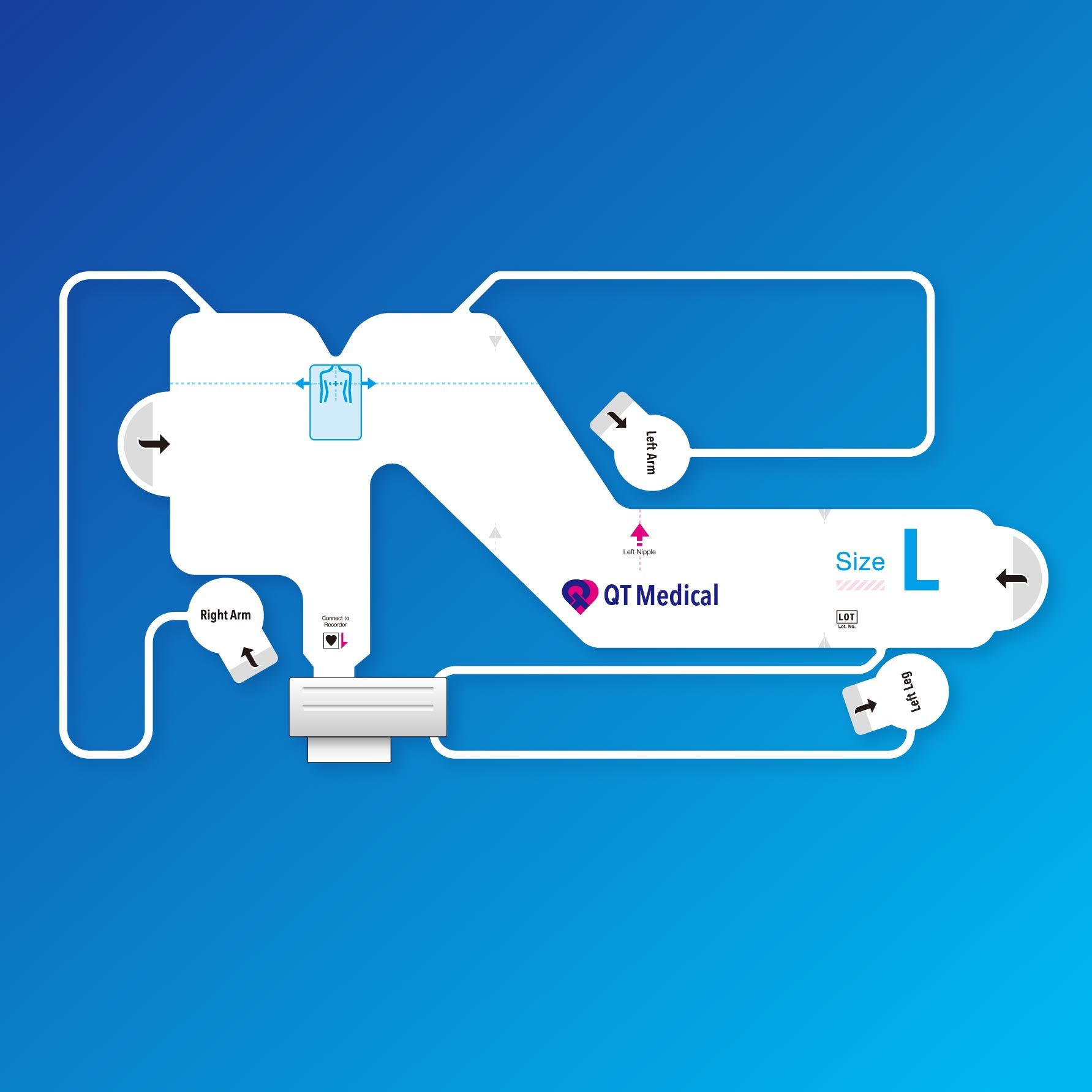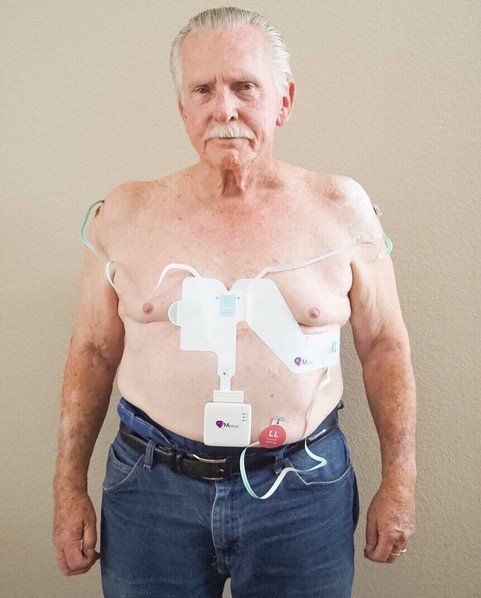pOpmetre from Axelife
The premier device for measuring arteriosclerosis and accelerated arterial ageing based on the central Pulse Wave Velocity, which is a
surrogate of arterial stiffness and a precursor to vascular diseases like PAD.

From ESG Guidelines 2023 - 5.5.2.2 Pulse wave velocity
Increase in large artery stiffness is the most important pathophysiological determinant of age-related increase of SBP and reduction of DBP (and thus of ISH or predominant systolic hypertension) and increase in pulse pressure in the old population. The age-related increase of arterial stiffness is accelerated by uncontrolled hypertension. Recent data suggest that increased arterial stiffness may be involved in the early stages of hypertension, with the stiffening preceding its development.
Arterial stiffness can be measured in superficial arteries (carotid, brachial, radial arteries) by the slope of the relationship between beat-to-beat BP and arterial diameter changes. However, it is now usually measured by carotid–femoral pulse wave velocity (cfPWV) or brachial–ankle PWV (baPWV). cfPWV is the gold standard for measuring
large artery stiffness in Europe, and its reference values are available for healthy European populations and patients at increased CV risk. Currently, reference values for baPWV are available for Asian populations, with European studies emerging. Arterial stiffness increases progressively with the BP increase, and is thus variable and
greater in the systolic than in the diastolic phase. This is because of the intravascular pressure-related distension, first of the more distensible elastic tissue and then of the less distensible collagen. Changes in the anatomical structure of the vessel wall, usually less elastin and more collagen and fibrotic tissue, are responsible for large artery stiffening with age and diseases. However, stiffness is also modulated by functional factors that may cause fast increases of stiffness in the absence of BP changes, presumably via contraction of smooth muscle tissue in the vessel wall, because distensibility may differ between contracted and relaxed vascular smooth muscle. This may account for the acute stiffening influence of increases in sympathetic activity on large and medium-size arteries. In stiffer arteries, the traumatic effect of pulsatile intraarterial pressure is greater and favours atherogenesis.
A large body of evidence exists that assessment of large artery stiffness, using cfPWV or baPWV, can be clinically useful in hypertensive patients. Evidence from the Framingham and European studies has shown that increase of arterial stiffness is highly prevalent in the hypertensive population. cfPWV is higher in MH than in normotension, which means that in patients with a normal office BP, increased PWV may identify those in whom out-of-office BP monitoring should be
performed to detect this higher CV risk condition. In two meta-analyses, cfPWV or baPWV have shown the ability to more accurately classify CV risk compared with conventional risk-based scores, an advantage of particular relevance in young and middle-aged patients in whom the risk falls into the low or moderate level. Adding cfPWV to conventional Framingham CV risk factors resulted in an NRI for CV mortality of up to 27%, while addition of baPWV to a model incorporating the Framingham risk score improved the NRI by 24.7%. Increased cfPWV and baPWV values have been found to predict an increased risk of new-onset hypertension in apparently healthy adolescents, young and middle-aged people. Finally, due to its relationship with age, PWV is considered a main element in the assessment of vascular aging, a concept of great current interest and considerable research. All antihypertensive drugs reduce arterial stiffness passively, i.e. by reducing BP and, thus, unloading the stiffer component (collagen) of the arterial wall. The reduction can be maintained over the long-term [282]. A few studies claim that some drugs may reduce stiffness more
effectively, thus possibly improving arterial structure, but evidence is not conclusive because stiffness must be measured at identical BP levels, which is difficult. There are reports, however, of treatment-induced reductions in stiffness in the absence of BP reductions. No RCT so far has proven that reducing arterial stiffness by
antihypertensive treatment induces a reduction of CV events. In one recent RCT, i.e. the SPARTE trial, a PWV-based treatment strategy was compared with the classical BP target-based strategy. There was no significant difference in the primary endpoint (CV outcomes) between the two groups for which, however, the study was underpowered. Nevertheless, in the group in which treatment was guided by reduction of PWV, the age-related increase of PWV was significantly lowered.
Less cfPWV increase has also been reported with a more intense BP reduction in a post hoc SPRINT study, in which the effect on PWV was related to less severe outcomes. PWV improvements have also been associated with improved prognosis in patients with resistant hypertension or on dialysis.
Price: £5,695.00 plus VAT.
For more information please call +44(0) 1420 88688 or
Email: sales@medimaxglobaluk.com
Visit:
home (axelife.com)
All Rights Reserved |
All Rights Reserved |


